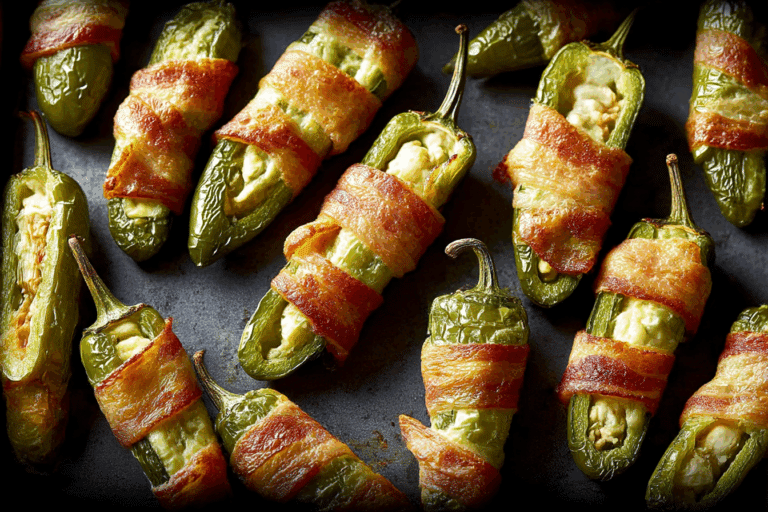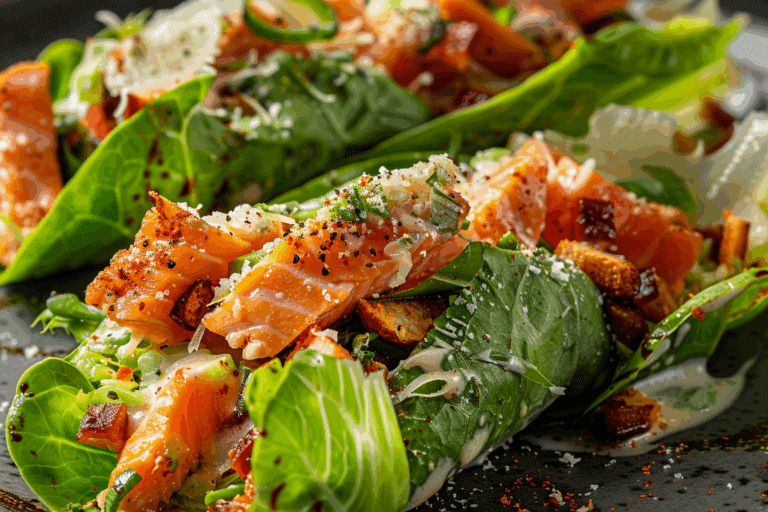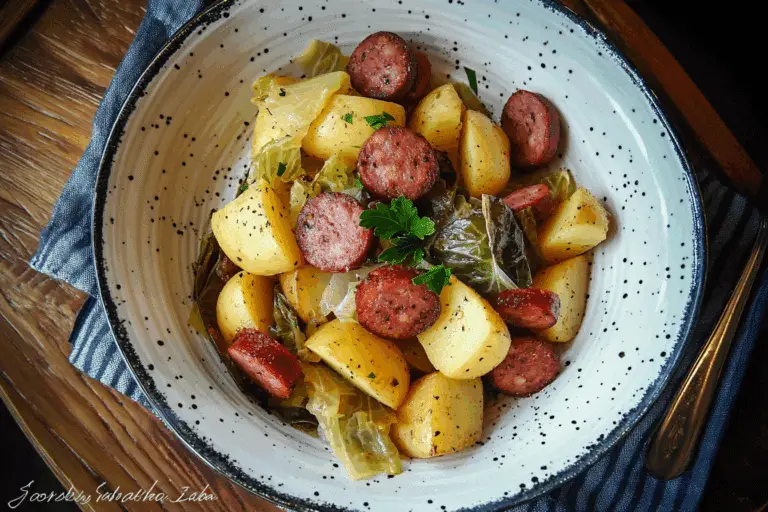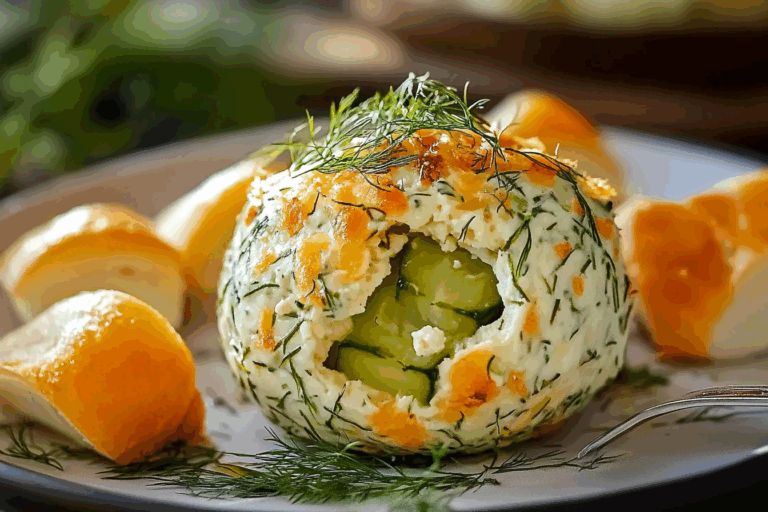Gluten‑Free Focaccia
There’s something deeply satisfying about stepping into the kitchen and baking a loaf of warm, golden‑brown focaccia that fills the house with the scent of olive oil, rosemary, and fresh bread. For me, this gluten‑free version doesn’t compromise on that experience—it still gives you the crisp crust, the tender inside, the dimples full of oil and herbs, and best of all, the confidence that even without gluten you’re making something special.
Behind the Recipe
I remember the first time I made focaccia in my old kitchen—hands sticky from oil, dough stretched out slowly, fingers pressing little indents all over the surface. When I switched to gluten‑free baking I worried I’d have to give up that ritual and the result wouldn’t measure up. But this recipe proved otherwise. It’s become one of those “make whenever I have time” breads—whether it’s for a dinner side, a sandwich base, or just warm with a splash of balsamic and olive oil.
Recipe Origin or Trivia
Focaccia is a classic Italian flatbread traditionally made with wheat flour and olive oil, dating back to ancient Roman times when bread was baked on the hearth and called panis focacius. :contentReference[oaicite:1]{index=1} In the gluten‑free world, bakers have adapted the techniques and flour blends so that this beloved bread doesn’t get left behind. It’s no longer just a substitute—it’s a bread people choose because it’s fantastic.
Why You’ll Love Gluten‑Free Focaccia
- Everyday bakery‑level results: Crisp crust, soft interior, dimples full of flavor.
- Special‑diet friendly: Gluten‑free doesn’t mean compromise.
- Versatile: Serve with soups, salads, use for sandwiches, or simply dip in oil.
- Impressive yet manageable: It looks and tastes fancy but the process is friendly.
- Customizable: Herbs, olives, sun‑dried tomatoes, sea salt—make it your own.
Chef’s Pro Tips for Perfect Results
- Use a quality 1:1 gluten‑free flour blend with binder (for example, one tested to give bread‑like texture). :contentReference[oaicite:2]{index=2}
- Measure flour by the spoon‑and‑level method, especially in gluten‑free baking, to avoid dense results. :contentReference[oaicite:3]{index=3}
- Don’t skip the dimpling step—use oiled fingers to press indentations so olive oil pools and gives character. :contentReference[oaicite:4]{index=4}
- Bake until the top and sides are deep golden brown—under‑baking can leave the center gummy in gluten‑free breads. :contentReference[oaicite:5]{index=5}
- Let the bread sit a few minutes after baking before slicing—this helps the crumb set and keeps texture intact.
Kitchen Tools You’ll Need
- Medium bowl or stand mixer (optional)
- Measuring cups + spoon or preferably a kitchen scale
- Baking dish or rimmed sheet pan, well oiled
- Oiled fingers for shaping + dimpling
- Oven with good heat distribution
Ingredients in Gluten‑Free Focaccia
- Gluten‑free flour blend (about 3 ½ to 4 cups) – choose one with built‑in binder or add xanthan/guar gum
- Instant yeast – 1 ½ to 2 teaspoons
- Warm water – around 110‑120 °F (43‑49 °C)
- Extra‑virgin olive oil – enough for dough + for topping/dimples
- Salt – both in dough and coarse flakes for topping
- Sugar or honey – small amount to feed the yeast
- Optional toppings: fresh rosemary, sea salt flakes, garlic, olives, sun‑dried tomatoes
Ingredient Substitutions
- Gluten‑free flour blend: If yours lacks binder or is heavy in certain starches, expect variations in texture.
- Olive oil: You can use a mild flavored oil, but you’ll miss the extra flavor from good olive oil.
- Herbs/toppings: Swap in fresh thyme, oregano, chopped olives, roasted garlic—play with it!
Ingredient Spotlight
Olive oil: It’s not just part of the dough; it’s essential for the characteristic focaccia flavor and crust. Also, the final drizzle pools in the dimples, giving richness and shine.
Dimple‑forming: These small indentations aren’t just tradition. They help trap oil and air pockets, creating that signature texture in focaccia.
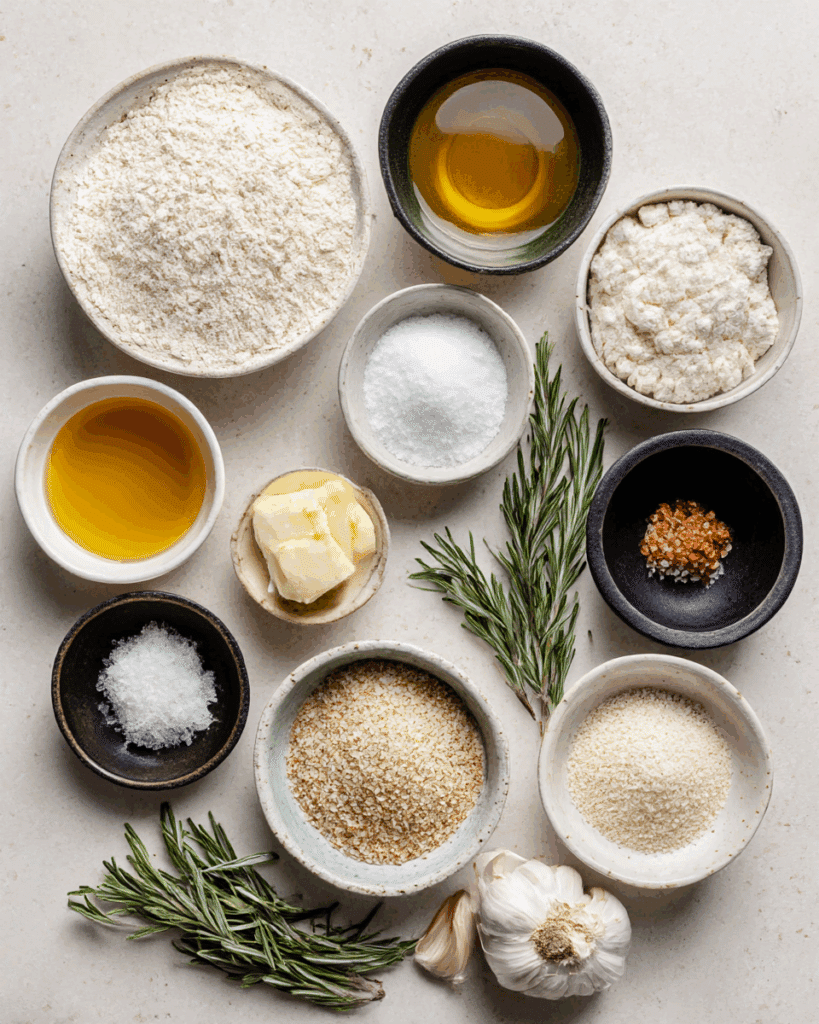
Instructions for Making Gluten‑Free Focaccia
Here’s how to bring it all together:
- Prepare the dough: In a bowl, combine gluten‑free flour blend, yeast, salt, and sugar.
- Add warm water (110‑120°F) and a generous portion of olive oil. Mix until the dough is somewhat sticky—think a thick batter more than a typical wheat‑based dough.
- First rise: Transfer the dough into a well‑oiled bowl (and if you like, cover and refrigerate overnight or up to 2 days for deeper flavor). :contentReference[oaicite:6]{index=6}
- Shape: Oil your baking dish or sheet pan. Scrape the dough in, then use oiled fingers to spread it gently and press dimples all over the surface.
- Topping: Drizzle with more olive oil, then sprinkle sea salt flakes and herbs (like rosemary) evenly over the top.
- Bake: Preheat oven (typically around 400‑425 °F / 200‑220 °C). Bake until the top and edges are deep golden brown and the internal crumb is set (some suggest an internal temperature above ~205°F for gluten‑free breads). :contentReference[oaicite:7]{index=7}
- Rest & serve: Let it rest a few minutes, then slice or tear. Serve warm.
Texture & Flavor Secrets
The best gluten‑free focaccia will have a crisp, golden crust, an olive‑oil‑infused interior full of little air pockets, and a tender crumb that still holds together when sliced. The rosemary and sea salt give aromatic flavor hits, while the olive oil brings richness and character.
Cooking Tips & Tricks
- Use a rimmed pan so the dough spreads evenly and doesn’t spill over.
- Oil your fingers generously before pressing dimples so the dough doesn’t stick.
- If your dough seems too wet, it’s okay—that’s part of many gluten‑free focaccia textures.
- Bake on a lower oven rack for a crisp bottom crust.
- If you like toppings like tomatoes or olives, press them into the dough gently before baking so they “merge” into the surface.
What to Avoid
- Don’t over‑flour the dough; too much flour = dense bread.
- Don’t skip the rising step; even gluten‑free dough benefits from relaxation and rise.
- Avoid baking at too low a temperature; hope for golden, not pale.
- Don’t forget to oil generously—both the pan and top—because oil = flavor and crust.
Preparation Time
- Prep Time: ~15 minutes (plus rising time)
- Bake Time: ~25‑35 minutes (depending on thickness and oven)
- Total Time: Variable depending on rise strategy (same‑day or overnight)
Make‑Ahead and Storage Tips
- Make the dough ahead and refrigerate overnight or up to 2 days for added flavor. :contentReference[oaicite:8]{index=8}
- Store baked focaccia in an airtight container at room temperature for up to 2‑3 days. :contentReference[oaicite:9]{index=9}
- For freezing: Cool completely, wrap well (foil or plastic), freeze up to 2‑3 months. To reheat, wrap in foil and warm in 350 °F oven until warmed through. :contentReference[oaicite:10]{index=10}
How to Serve Gluten‑Free Focaccia
- As an appetizer with extra‑virgin olive oil and balsamic vinegar for dipping.
- As a side with soups, salads, grilled vegetables, or pasta dishes.
- For sandwiches: slice horizontally and fill with roasted veggies, cheese, meats, or plant‑based fillings.
- Warm with garlic butter or herb spread for an indulgent addition.
Creative Leftover Transformations
- Focaccia croutons: Cube leftover focaccia, toast in oven, use in salads or soups.
- Panzanella salad: Use torn focaccia pieces in place of stale bread in a tomato‑bread salad.
- Bread bowl base: Use thick focaccia slice as base for warm dips or spreads.
Additional Tips
- Experiment with topping combinations: caramelized onions + thyme, chopped olives + sun‑dried tomatoes, or garlic + parsley.
- Want extra herb flavour? Mince fresh rosemary and mix some into the dough.
- Want that wow factor? After baking, drizzle with high‑quality olive oil and sprinkle with finishing sea salt flakes right before serving.
Variations to Try
- Sun‑dried tomato & basil: Press sun‑dried tomato pieces and fresh basil into the dough before baking.
- Olive & rosemary: Use sliced Kalamata or green olives + chopped rosemary on top.
- Cheese‑topped: Sprinkle grated Parmesan or vegan cheese in the last few minutes of baking.
- Whole‑grain gluten‑free: If your flour blend allows, incorporate quinoa or sorghum flour for a heartier texture.
FAQ’s
Q1: Can I use any gluten‑free flour blend?
A1: You can, but results vary. Baker testing found the best results with blends like King Arthur Gluten Free Measure for Measure. :contentReference[oaicite:11]{index=11}
Q2: Why is my focaccia gummy inside?
A2: Common causes include under‑baking, too much flour, or using an unsuitable flour blend.
Q3: Do I need to proof the yeast separately?
A3: Not necessarily if using instant yeast—just ensure your water temperature is correct. :contentReference[oaicite:12]{index=12}
Q4: Can it be dairy‑free or vegan?
A4: Yes—this recipe naturally doesn’t require dairy or eggs, making it suitable for vegan adaptations.
Q5: How thick should it be?
A5: Traditional focaccia is about 1 to 2 inches thick. With gluten‑free dough you’ll still get better texture if it’s not overly thin.
Q6: Can I bake it on a pizza stone?
A6: Yes—preheating a stone can help crisp the base. Give it a try and monitor baking time.
Q7: Why do we dimple the dough?
A7: Dimpling creates oil pockets, traps air, and yields the signature focaccia texture. :contentReference[oaicite:13]{index=13}
Conclusion
Gluten‑free focaccia is proof (pun intended) that dietary restrictions don’t mean giving up on great bread. With the right flour blend, a little olive oil, some dimpling love, and fragrant toppings, you can bake a loaf that rivals the best wheat‑based focaccia. Serve it warm, serve it proudly, and listen to the “wow”s from anyone who didn’t even know it was gluten‑free. Your kitchen is ready—let’s bake!
Print
Gluten‑Free Focaccia
Description
This Gluten-Free Focaccia is golden, fluffy, and infused with olive oil and rosemary. Perfectly crisp on the outside and tender inside, it’s a bread-lover’s dream made gluten-free.
Ingredients
- 3 ½ to 4 cups gluten-free flour blend (with xanthan gum)
- 2 teaspoons instant yeast
- 1 ½ cups warm water (110-120°F)
- ¼ cup extra-virgin olive oil (plus more for topping)
- 1 teaspoon salt
- 1 tablespoon sugar or honey
- 1 tablespoon fresh rosemary, chopped (optional)
- Flaky sea salt for topping
Instructions
- In a bowl, combine flour blend, yeast, salt, and sugar.
- Stir in warm water and olive oil until a sticky dough forms.
- Cover and let rise for 1 hour or refrigerate overnight for deeper flavor.
- Oil a baking dish and spread the dough with oiled fingers.
- Dimple the surface generously and drizzle with olive oil. Sprinkle with rosemary and flaky salt.
- Bake at 425°F for 25–35 minutes, until golden brown and crisp.
- Let cool slightly before slicing and serving warm.
Notes
- Use a flour blend with binder for best structure.
- Overnight rise enhances flavor and texture.
- Oil both your hands and pan to avoid sticking.
- Store in airtight container for up to 3 days or freeze.




